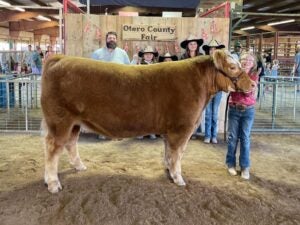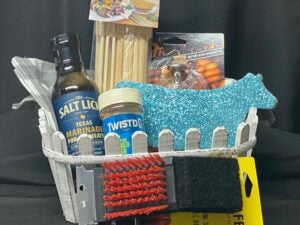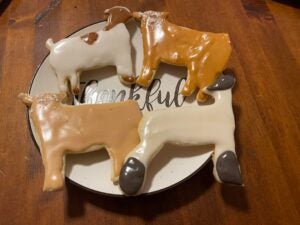Ag kids around the country will be putting the finishing touches on their projects this summer to exhibit as members of FFA and 4-H at their local, regional, and state fairs. It’s a busy season, but the time and sweat poured into these projects are among of the best parts of being a young exhibiting member with the hopes of meeting exhibition goals and maybe even making the sale.
But what’s a sale without buyers? Each year, businesses and individuals attend fair sales around the country to support young members and their endeavors, but if they don’t know about the sale, they probably won’t come.
This is where 4-H and FFA members can come in; they can personally invite buyers to attend the auction. A word of caution, though: You’re representing not only yourself, but your fair, sale, and the 4-H or FFA organization when you visit with buyers, so it’s important to represent well.
If they don’t know about it, they can’t show up
There are a few ways that members can invite buyers. It’s best to make sure you’re sending out invitations well in advance so people can plan accordingly.
The first way to invite buyers is a simple letter to the business sharing information about yourself, your project, your club, why 4-H and FFA are important for you, and details on your project (pictures are always a bonus!)
Don’t forget to share fair and sale dates, showtimes, locations, and how they can participate as a buyer. I don’t recommend asking them to specifically support your animal, just to support the program and members — if you represent well, the likelihood is that you’re already on their list.
Another way to invite buyers is to visit businesses with similar information personally. Your fair may have a flyer or other handout to provide businesses with, but if they don’t, you can hand deliver the type of letter mentioned above. When you visit a business, it’s important to understand that they’re trying to get work done during business hours, so try to read the room and not overstay — parents, you may need help here. If you’re inclined, some fair-related goodies or a personalized item with an invitation for previous buyers might be worth bringing along.
So, your marketing and salesmanship paid off. Now what?
Members who market livestock (and other items) through auctions at the fair often receive a premium price for their animals. It’s important to note that these aren’t just any old livestock — they’re an excellent tool for teaching young people responsibility, and they receive the utmost of care during their time as a project.
However, at the end of the day, these animals are only truly worth the current market price per pound for live animals of that species. Our fair buyers who support our kids at premium prices deserve a “thank you!”
Don’t forget the thank you card. Writing thank you notes is a skill that many have, but often overlook, but think of the time it takes to fill out a card versus the time it took for a buyer to drive to the sale, fill out paperwork, and then support you with their bids — it’s worth the effort.
Thank you cards should include a salutation, exactly what you’re thanking them for, and specific details about why you’re thankful. A detail or two about what your future plans are can be a great way to keep buyers engaged in future years, and then simply wrap the card up with a closing statement and a final salutation.
I don’t know that anyone who’s supporting youth at the fair expects a buyer gift, but buyer gifts are a popular way to say “thank you,” and you can give your buyer something to show off.
Here are a few ideas:
The framed sale or show photos for the buyer to display at their business. Often, there will be a show photographer that you can specifically buy a photo from, frame that picture, and then deliver it to your buyer.

Baskets are also a great way to thank your buyer at the sale, or even afterward. The options are endless when it comes to gift baskets. These can be themed, include local items, or season items for your buyer to enjoy.

Personalized items are another great way to show your appreciation and give buyers something to show off. Many businesses sell items that you can personalize such as cutting boards, boxes, cups, mugs, or even caps. Your FFA program may even have access to tools through your woods or metals shop to make your own, personalized items.
If you’re delivering your “thank you” in person, homemade goodies are also usually a hit. Just make sure you’re following all food safety protocols along the way, or consider preparing items in a commercial kitchen if you have one available to you through school, 4-H, or your FFA chapter.

Buyers don’t have to support FFA and 4-H projects, but they certainly can’t support you if they don’t know about the opportunity. And when someone goes above and beyond, it’s worthwhile to take the time to make sure that your buyer knows they’re appreciated.
Heidi Crnkovic, is the Associate Editor for AGDAILY. She is a New Mexico native with deep-seated roots in the Southwest and a passion for all things agriculture



